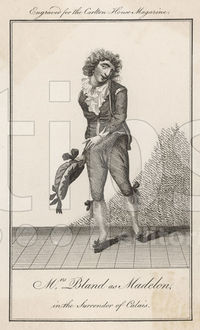Annotation:Lira Lira La
X:1 T:Lira Lira La M:C| L:1/8 R:Air Q:"Moderato" B:Aird – Selection of Scotch, English, Irish and Foreign Airs, vol. 4 (1796, No. 186, p. 70) Z:AK/Fiddler’s Companion K:D A2d2d3d|(cd)(ec) d4|(ef)(ge) (dc)(BA)|A2 d>e d2 z2| A2d2d3d|(cd)(ec) d4|(ef)(ge) (dc)(BA)|A2 d>e d2z2| f3f (fe) e2|(ed)(cd) A4|f2f2 (fe) e2|(ed)(cd) !fermata!A4| ABcA d4|cdec d4|(ef)(ge) (dc)(BA)|A2 (de) d2z2||

Little thinks the townsman's wife,
While at home she tarries;
What must be the lass's life,
Who a soldier marries.
Now with weary marching spent,
Dancing now before the tent,
Lira, lira, lira, lira, lira la,
With her jolly soldier.
The melody also appears in several late 18th/early 19th century publications, such as James Aird's Selection, vol. 4 (Glasgow, 1796), Thomas Preston's Entire New and Compleat Instructions for the Fife (London, 1796), G. Astor's The Hoboy Preceptor, or Military Pieces (London, 1800), and Thomas Ball's The Gentleman's Amusement Book 2 (Norfolk, Va.).

